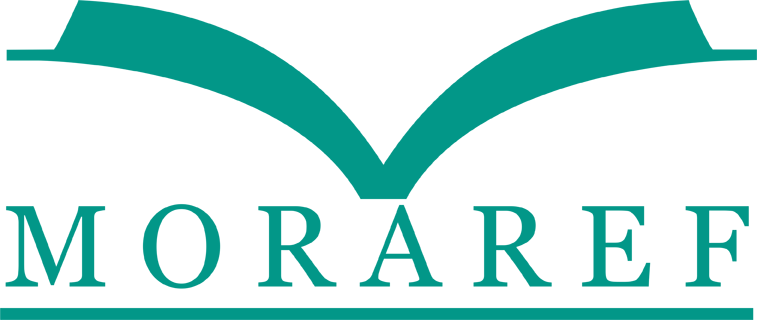STATUS KESEHATAN GIGI & MULUT MASYARAKAT KABUPATEN TIMOR TENGAH UTARA BERDASARKAN FORMAT PEMERIKSAAN WHO ORAL HEALTH SURVEYS BASIC METHODS 5th EDITION
Abstract
One of the aims of Oral Health Global Goals 2020 is to reduce missing tooth or tooth loss due to dental caries, according with the fact that oral health problems that predominate in the world especially in Indonesia are tooth loss due to caries. Therefore an effort is needed to reduce the missing component through the implementation of good health services that are obtained from good planning, good planning is obtained from the existence of good data as well , good oral health status data obtained from data collectors, instruments and standardized oral examination formats good too. The oral examination format from WHO Oral Health Basic Methods 5th Edition is the latest examination format to record various indicators of oral health status but has not been widely used in determining the oral health status of individuals or communities in Indonesia . Research purposes is to know the community oral health status of the North Central Timor District people in accordance with the latest examination format from WHO Oral Health Surveys Basic Methods 5th Edition. This is a descriptive survey research with a cross sectional design , which was carried out by taking 208 respondents from the community of 5 villages in North Central Timor District, such as Hauteas, Tes, Sainiup, North Oenenu and Homusu village..The data obtained through direct examination by the dentist in the respondent's oral cavity to determine their oral health status and recorded in the WHO Oral Health Surveys Basic Methods 5th Edition examination format. The data will be analyzed descriptively in accordance with the provisions set by WHO. The oral health status of North Central Timor people are: Dentition status, on average there are 8 carious crowns and 10 exposed roots, both carious and not carious. Periodontal status, on average they had 5 teeth with gingival bleeding , whereas for gingival pocket, on average they had 6 teeth with deep gingival pocket 4- 5 mm . Loss of attachment status, on average there are at least 1 sextant with various conditions for periodontal tissue attachment loss, such as 4-5 mm, 6-8 mm, 9-11 mm , and ≥ 12 mm attachment loss from the cemento enamel junction. There is no fluorosis status . Dental erosion status, about 16.19% of them had enamel erosion, and 4.37% had dentine erosion. The average number of teeth with enamel erosion are 12 teeth and those with erosion to the dentin on average are 7 teeth .Oral mucosal lesions, about 3.9% of them had stomatitis aphthous recurrent (SAR), and 1.3% of the people had suspected oral cancer. Denture status, only 0.43 % of the population uses partial removable teeth, and only in the maxilla, the rest there is no denture.Intervention urgency status, about 60.3% of the population need oral health care, but not urgent, about 15.53% of the population do not or do not need oral health care, about 5.24% of the population need oral health care urgently. There are oral health problems among NorthCentral Timor District people, such as carious crowns, exposed roots, gingival bleeding, gingival pocket, loss of attachment periodontal, dental erosion, oral mucosal lessions, and dentureless edentulous, so they need oral intervention.
Keywords
Full Text:
PDFReferences
Agtini, M.D, Pola Status Kesehatan Gigi Dan Pemanfaatan Pelayanan Kesehatan Gigi Dan Mulut Di Indonesia Pada Tahun 1990 – 2007, Media Penelit. Dan Pengembang. Kesehat. Volume XIX Nomor 3 Tahun 2009, hal 144 – 153.
Badan Litbangkes, Laporan Hasil Riset Kesehatan Dasar tahun 2013, Buku Riskesdas Dalam Angka, Badan Litbangkes Kementerian Kesehatan R I, Jakarta, 2013
Graharani, AS, Pengaruh Menginang Terhadap Tingkat Keparahan Jaringan Periodontal Pada Lansia Di Desa Tugu Kecamatan Jumantono Kabupaten Karanganyar Tahun 2016, Publikasi Ilmiah, Program Studi Pendidikan Kedokteran Gigi , Fakultas Kedokteran Gigi, Universitas Muhammadiyah Surakarta, Surakarta, 2016
Hobdell M, at al. Global Goals for Oral Health 2020. International Dental Journal .
Krismariono, A., Prinsip Dasar Perawatan Resesi Gingiva, Dentika Dental Journal, 2014; Vol 18, 96 No. 1, 96-100
Lim, E., Kebiasaan Menyirih Sirih dan Lesi Yang Dijumpai Pada Mukosa Oral Masyarakat Batak Karo, Skripsi, FKG Universitas Sumatera Utara, Medan, 2007
Pongibsidang, H., Alasan Masyarakat Kelurahan Sario Tumpaan Tidak Menggunakan Gigi Tiruan, Jurnal e-Gigi, 2013; Vol. 1, No. 2 (2013).
Tandiarrang, G. W, Pengaruh Lama dan Frekuensi Meyirih Dengan Terjadinya Gingivitis Pada Masyarakat di Kabupaten Toraja Utara, Skripsi, Fakultas Kedokteran Gigi, Universitas Hasanudin, Makassar, 2015
WHO, Oral Health Surveys Basic Methods. 5 th Edition WHO, 2013
DOI: https://doi.org/10.31983/jkg.v6i1.4401
Article Metrics
Refbacks
- There are currently no refbacks.
| View My Stats |











.png)


.png)
.png)









